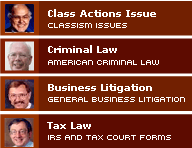It is not necessarily unlawful for an employer to adopt policies that put older workers at a disadvantage. Such policies pass muster under the Age Discrimination in Employment Act as long as they are based on “reasonable factors other than age.”
The question in a Supreme Court argument on Wednesday was whether the employer has to prove that such “reasonable factors” exist, or whether it is up to the employee who has brought a lawsuit to show that they do not.
The burden of proof makes a substantial difference in any lawsuit, although statutes rarely specify which side bears it. For federal laws against race and sex discrimination in the workplace, the Supreme Court has filled the gap by developing fairly elaborate procedures that plaintiffs and defendants must follow. But for age discrimination, the rules have remained murky, leaving the lower courts in confusion over how to handle this rapidly growing category of workplace discrimination claims.
The argument the justices heard on Wednesday was in a case brought by two dozen workers at a federal research laboratory in upstate New York. Carrying out a reduction in force, the employer, Knolls Atomic Power Laboratory, which is owned by the Lockheed Martin Corporation, terminated 31 employees after using a set of guidelines to evaluate workers’ skills and amenability to retraining. All but one dismissed employee was over 40, the age at which the protections of the federal age discrimination law begin to apply.
Most of the affected employees joined a lawsuit arguing that there was no justification for using an evaluation system that had such a starkly disparate impact on older workers, and that the procedure consequently violated the federal law. The plaintiffs won in a jury trial. But the judgment was overturned by the United States Court of Appeals for the Second Circuit, in Manhattan, which held that plaintiffs in such a case had the burden of showing that the policy they were challenging was unreasonable.









